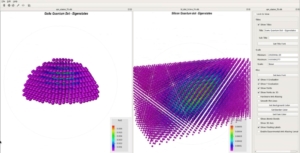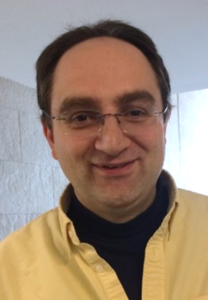How to Use Victory Quantum Transport Models for Atomistic Device Performance Predictions
 This is a rebroadcast of the 2022 International Symposium on VLSI Technology, Systems, and Applications (VLSI-TSA) Special Session T9-2.
This is a rebroadcast of the 2022 International Symposium on VLSI Technology, Systems, and Applications (VLSI-TSA) Special Session T9-2.
Performance predictions of nanodevices ideally include:
- Atomistic resolution
- A consistent description of all quantum phenomena
- A realistic treatment of incoherent scattering on phonons and impurities
It is a common belief that atomistic quantum transport either entails unfeasible numerical load or neglects scattering effects altogether. The latest incoherent scattering models of the quantum transport implementations are presented. They faithfully reproduce–without adjustable parameters–experimental observations of band gap narrowing and Urbach band tails in a sequence of III-V semiconductors and transition metal dichalcogenides. These scattering models are fully compatible with low-rank approximations that accurately solve quantum transport in nanowire transistors for < 1% of the original numerical load, making them feasible for few nodes compute infrastructure.
The new quantum transport method ROBIN overcomes notorious shortcomings of periodic boundary conditions in material simulations. It is exemplified on graphene alloyed with Si atoms that the periodicity assumption elevates small perturbations to systematic changes of material properties. Assuming the Si alloy atoms are periodically distributed yields a bandgap in graphene, while random Si distribution shows only a linear shift of the graphene Dirac cone which is in quantitative agreement with
experimental observations.
What You Will Learn
- The latest incoherent scattering models of the quantum transport implementations
- The new quantum transport method “ROBIN”
- Overcoming shortcomings of periodic boundary conditions in material simulations
Presenter
 Dr. Tillmann Kubis
Dr. Tillmann Kubis
Katherine Ngai Pesic and Silvaco Research Assistant Professor of Electrical and Computer Engineering
Prof. Dr. Tillmann Kubis is leader of Purdue’s NEMO5 development team. His research interest includes all topics of equilibrium and non-equilibrium phenomena in nanodevices and molecules. This covers electronic and phonon bandstructures as well as heat, charge, and spin transport in nanodevices. Dr. Kubis holds a Dr. rer. nat. in theoretical semiconductor physics from the Technische Universität München, Garching, Germany.
WHO SHOULD ATTEND:
Semiconductor device, IP, Circuit, CAD, SoC and System design engineers, product managers and engineering management.
When: May 5, 2022
Where: Online
Time: 10:00am-10:30am-(PDT)
Language: English

